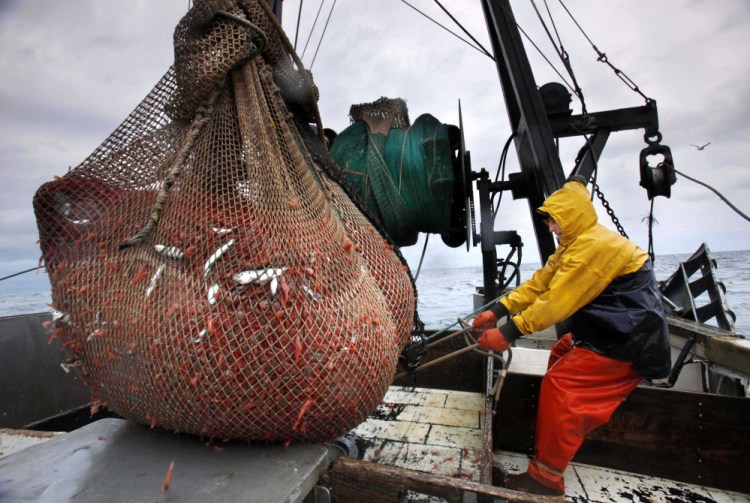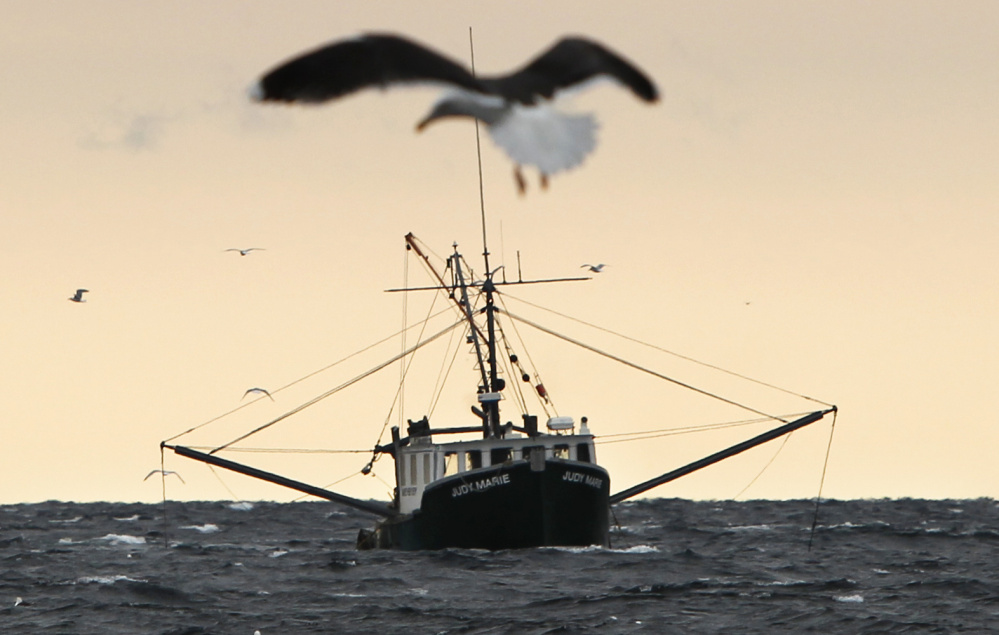The Maine shrimp fishery will remain closed in 2017, but the amount that shrimpers can take during scientific surveys and then sell has more than doubled.
Interstate fishery managers at the Atlantic States Marine Fisheries Commission voted Thursday to keep the shrimping moratorium in effect for the 2017 season on the advice of its science advisers. The popular winter seafood had been a favorite throughout New England before the population collapsed in 2013 despite several years of increasingly stringent fishing restrictions, such as trip and trap limits, and smaller landings.
The increase in the amount of shrimp that can be hauled for research work will mean this hard-to-get regional delicacy will once again be available over the winter, albeit in very limited batches, which will probably delight restaurateurs who like to serve up this sweet, pink protein in a saute, a skillet or a salad. Buyers paid a record $4 a pound for Maine shrimp at a research set-aside auction at the Portland Fish Exchange in 2015.
Scientists say the status of the small crustacean “continues to be critically poor” with the stock’s overall numbers, including the shrimp that can be harvested and could spawn new generations, at unprecedented lows for five consecutive years, according to the latest shrimp stock assessment report.
The scientists blame the “poor prospects for the near future” on rising temperatures in the Gulf of Maine.
The latest stock assessment report did have some good news, however – the number of northern shrimp that had survived the first year of life in 2016 was the highest it had been in six years, although still below the long-term average. These shrimp wouldn’t be considered harvestable for another two years, and not spawn for at least another year after that.
The shrimp board overwhelmingly voted down Maine’s attempt to reopen the commercial fishery on a small-scale experimental basis, allowing 200 metric tons of catch split up between trawlers and trappers with strict limitations meant to protect the species from going over that limit, according to Terry Stockwell, director of external affairs for the Maine Department of Marine Resources, who sits on the shrimp board.
“There is some hope for the future,” Stockwell said. “We tried to crack the door open, but the other states aren’t quite ready yet. I did get the sense from the discussion that in another year, when the 2013 shrimp can spawn a second time, increasing the number of recruits one more time, that they’ll be ready to reopen the fishery, on an experimental basis.”
But the board agreed to increase the amount of shrimp that can be caught for scientific research and then sold at auction. In 2016, the fishing vessels that were tapped through a lottery system to fish for shrimp – to test for their abundance, the health of the catch and the spawning process – were allowed up to 22 metric tons of shrimp. In 2017, they will be allowed to harvest and then sell 53 metric tons.
That will allow 10 trawlers and five trappers to fish for eight weeks, Stockwell said. All the trappers would be from Maine, able to fish 40 traps and catch no more than 500 pounds a week. Eight of the 10 trawlers would be from Maine, with one each from Massachusetts and New Hampshire, and they could catch up to 1,200 pounds per trip, Stockwell said. The fishermen would be chosen by lottery, with preference given to those who had fished before 2011.
“I really wanted to increase the (research set-aside) to expand the survey work, of course, but also to try to gain some industry support for the science by involving more of them in it,” Stockwell said. “But unlike in past years, we will not pay the fishermen to shrimp. The shrimp itself is the compensation. It should be more than enough.”
Even at its height, when fishermen landed $13 million worth of shrimp about two decades ago, this fishery represented a small part of the state economy, but it represented an important source of additional income for Maine fishermen, from lobstermen to ground fishermen, during the winter months. In years past, a lot of Maine fishermen held state and federal licenses to fish for multiple species.
Despite the continuing moratorium, the commission’s northern shrimp board is working on a plan on how to manage the fishery if the population ever rebounds, trying to come up with ways to reopen it slowly so that the pent-up fishing effort doesn’t send the stock back into collapse. The high prices of research shrimp sold at auction have left Maine shrimpers eager to return to work, with traps still seen piled up on Maine docks.
Canada and Greenland fishermen still fish for Maine shrimp in their colder waters, although their numbers have fallen there, too, managers say.
The increasing number of fish that prey upon northern shrimp, including spiny dogfish and red fish, may also play a role in declining numbers, they say.
Send questions/comments to the editors.






Comments are no longer available on this story